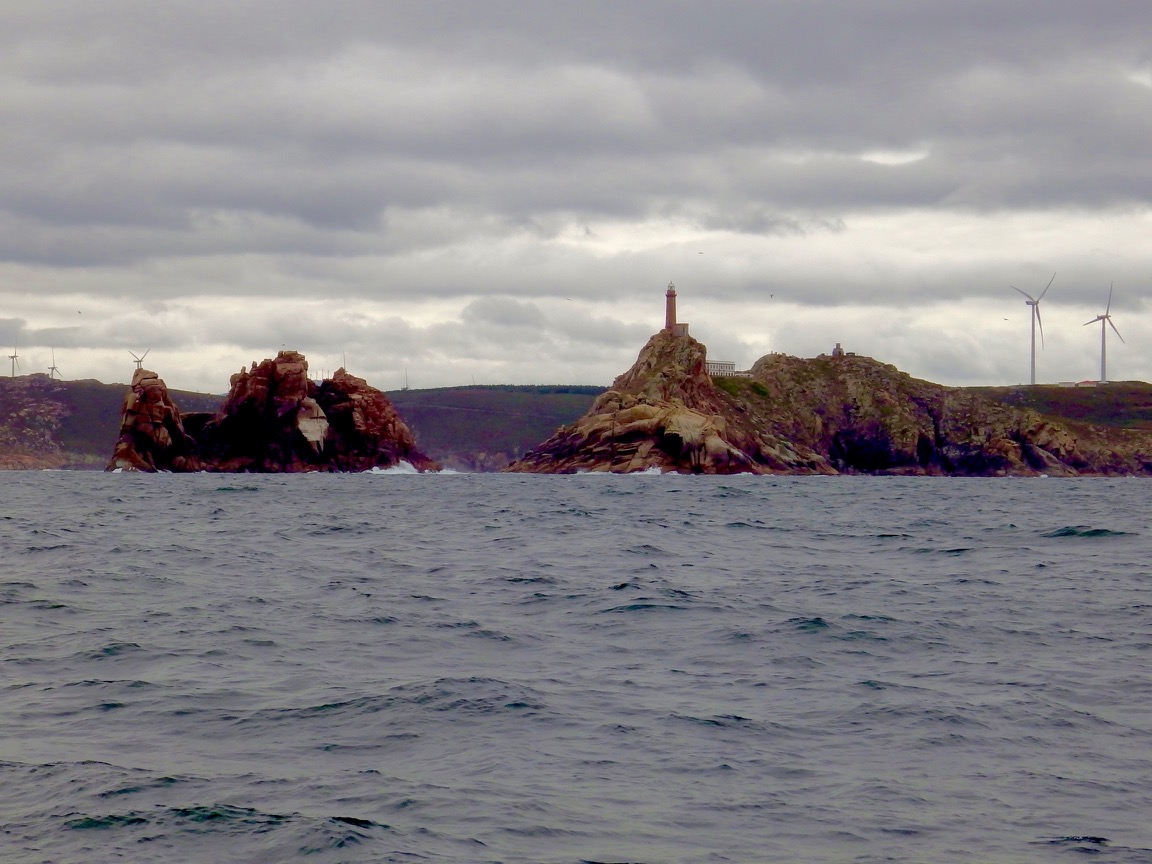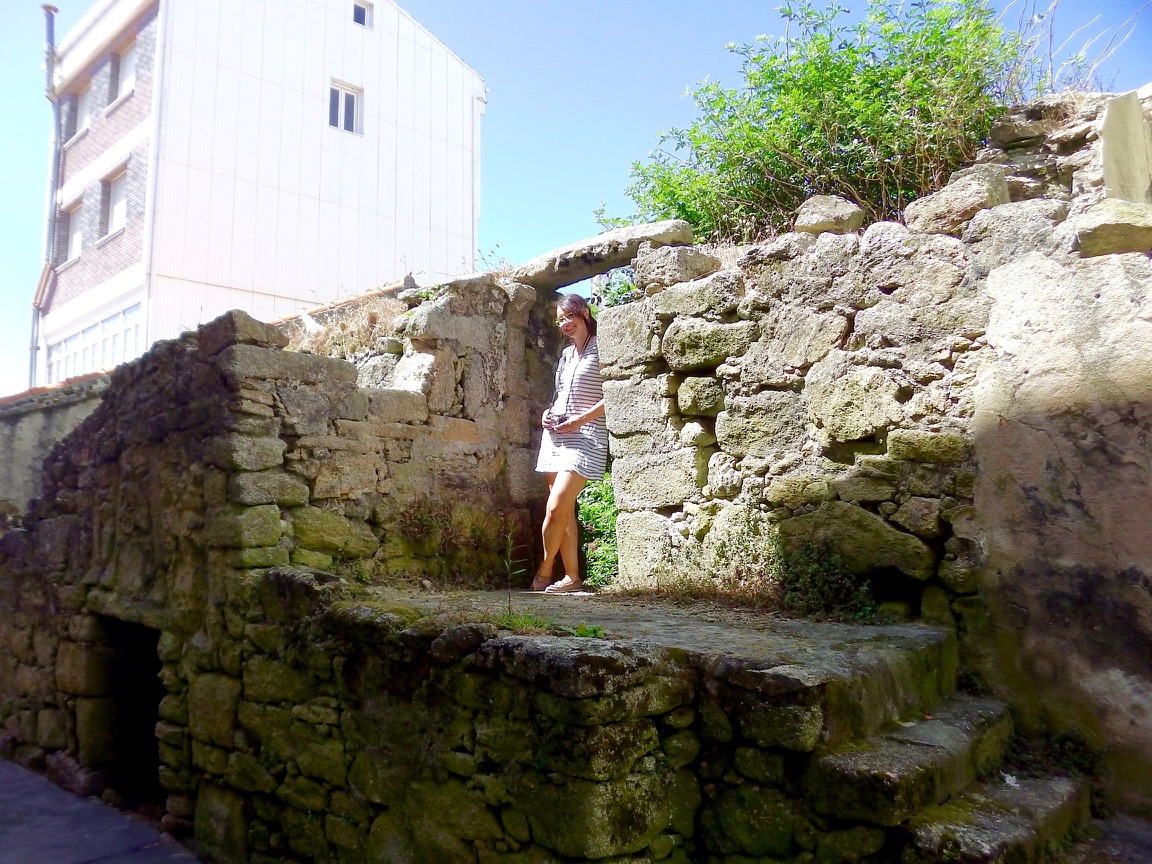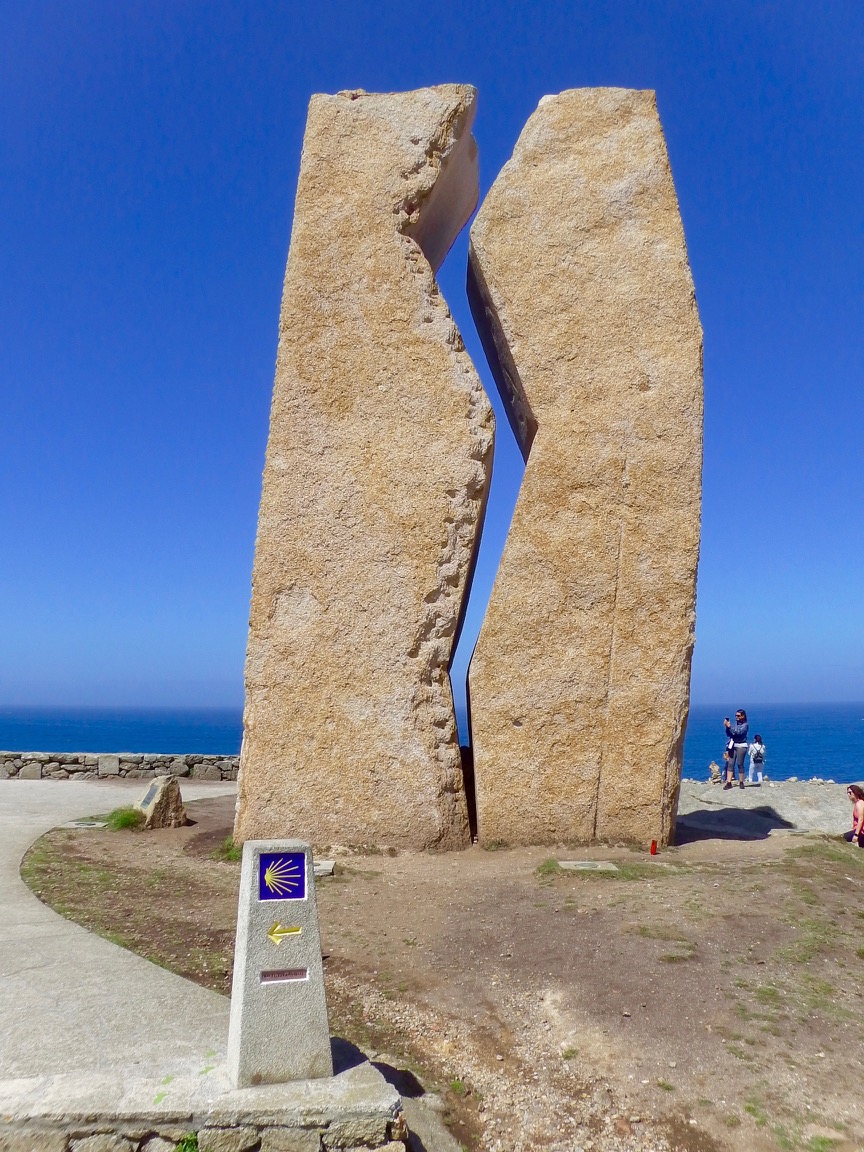Rias Altas
Muxía,
Rias Altas,
Sailing,
Spain

The next stop was going to be Camariños, in the Ria named after it. As we left the shelter of the Ria de Corme Y Laxe, the wind picked up quickly and we ended up bashing hard into 20 knots wind with gusts around 25. This made for some exciting hand-steering. A cross sea rose up very quickly and things got a bit bouncy again, with swell from the side and wind waves from the front. When I went for the toilet, I stepped into water that was sloshing around in the heads cabin. The sink on a boat is really just a pipe connected to the sea, so a wave must've slammed in the boat in just the right way to shoot up the sink in a nice fountain and flood the cabin. Possibly the little water left in the bottom of the toilet also hopped out to contribute. We really ought to remember to close the seacocks in rough weather.

Heading into the Ria, we decided the port on the opposite side of Camariños, Muxía, would offer better shelter from the southerly blow, so we quickly changed our minds and headed there. There is a small marina here, run by the petrol station attendant, who sprints out to the pontoons to take the lines when a boat comes in. She waved and shouted, pointing at a pontoon, which we managed to gracefully dock at despite the strong winds. We then helped a few other boats coming in with varying levels of gracefulness, one banging into the pontoon so hard their bow tried to climb onto the planks, which didn't stop them from cheering and high-fiving about a landing well done.


The town was a former fishing village, now mostly taken over by holiday apartments, with only a few stone huts remaining and most of the vegetable gardens abandoned and reclaimed by nature. There's a number of seafood restaurants and cafés, two small supermercados (one had fresh baked bread!) and a handful of other shops.

Muxía is on the Camino de Santiago (St. James' Way), a pilgrim route. This is a modern substitue for self-flagellation which involves hiking several hundred kilometers through Europe, staying in bunk-bed hostels and stopping at every church on the way, all to acquire a scallop shell for a trophy at the end. Some even do it more than once.


This part of the Galician coast was the scene of a major ecological disaster, when in 2002 the MV Prestige burst a tank in a storm. The captain feared his ship would sink and asked for help. The Spanish promptly told him to sod off and stay the hell away from their coast, so he turned northwest towards France, who told him much the same. Desperate for a safe harbour, where his vessel could be saved and any oil leakage easily contained, he turned south towards Portugal, who sent their navy to intercept the vessel - not to aid it, but to prevent it from approaching their waters. He had no choice but to head out towards the stormy sea, where the ship predictably did break apart, sank to 4km depth and proceeded to leak the rest of its cargo, spreading large quantities of oil across thousands of kilometers of coastline and making for an incredibly difficult salvage and cleanup operation.

We ended up getting stuck here for longer than we liked, due to various unfavourable weather, including fog, rain and a gale. We used the time for some rest and for tasting more Spanish food, sweets and drink. A reasonable quality Rioja can be had for €2 a bottle and there's some agreeable beer too. I've also fiddled a bit with the navigation electronics and finally installed the optional gyroscope sensor for the autopilot I'd picked up more than a year ago.